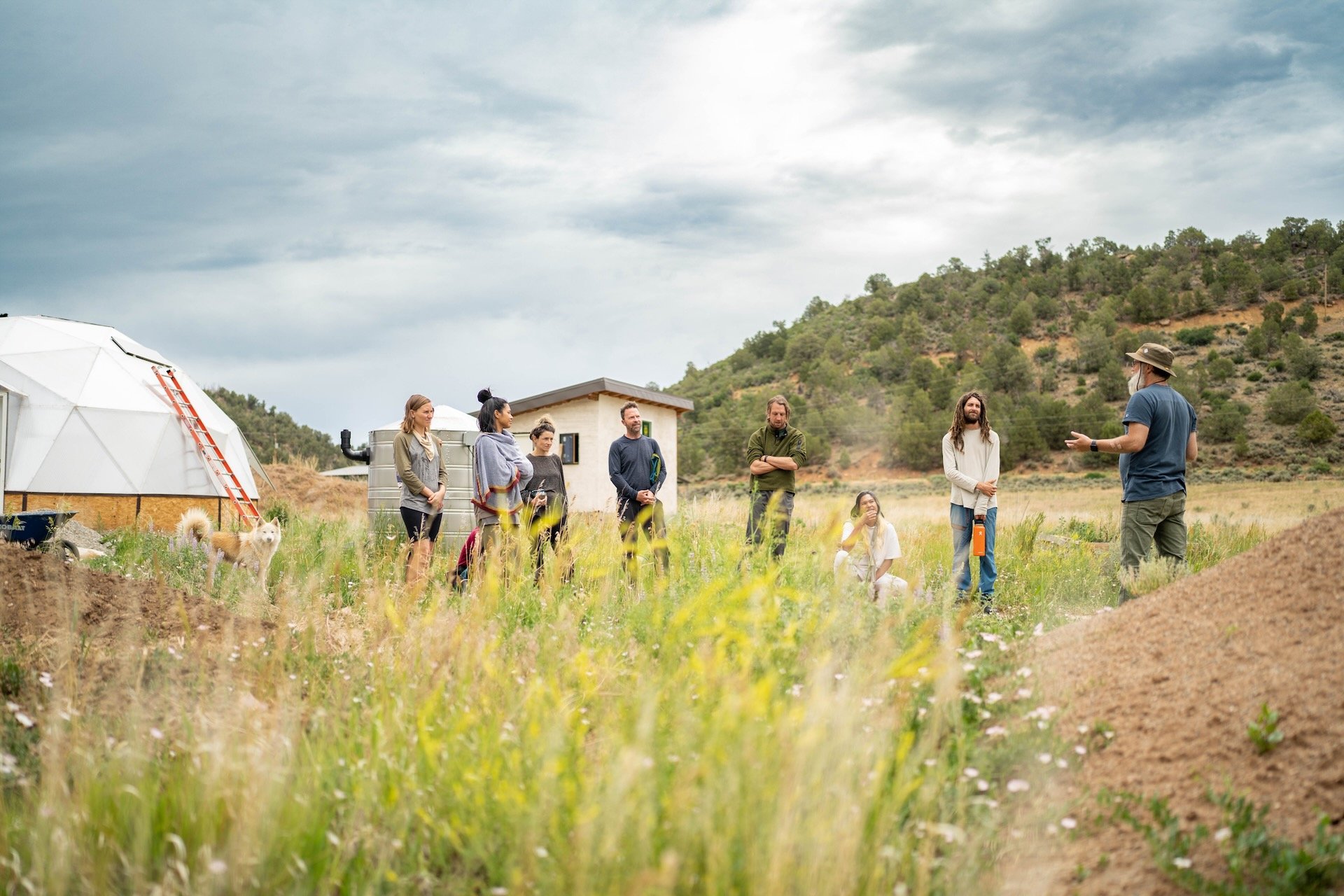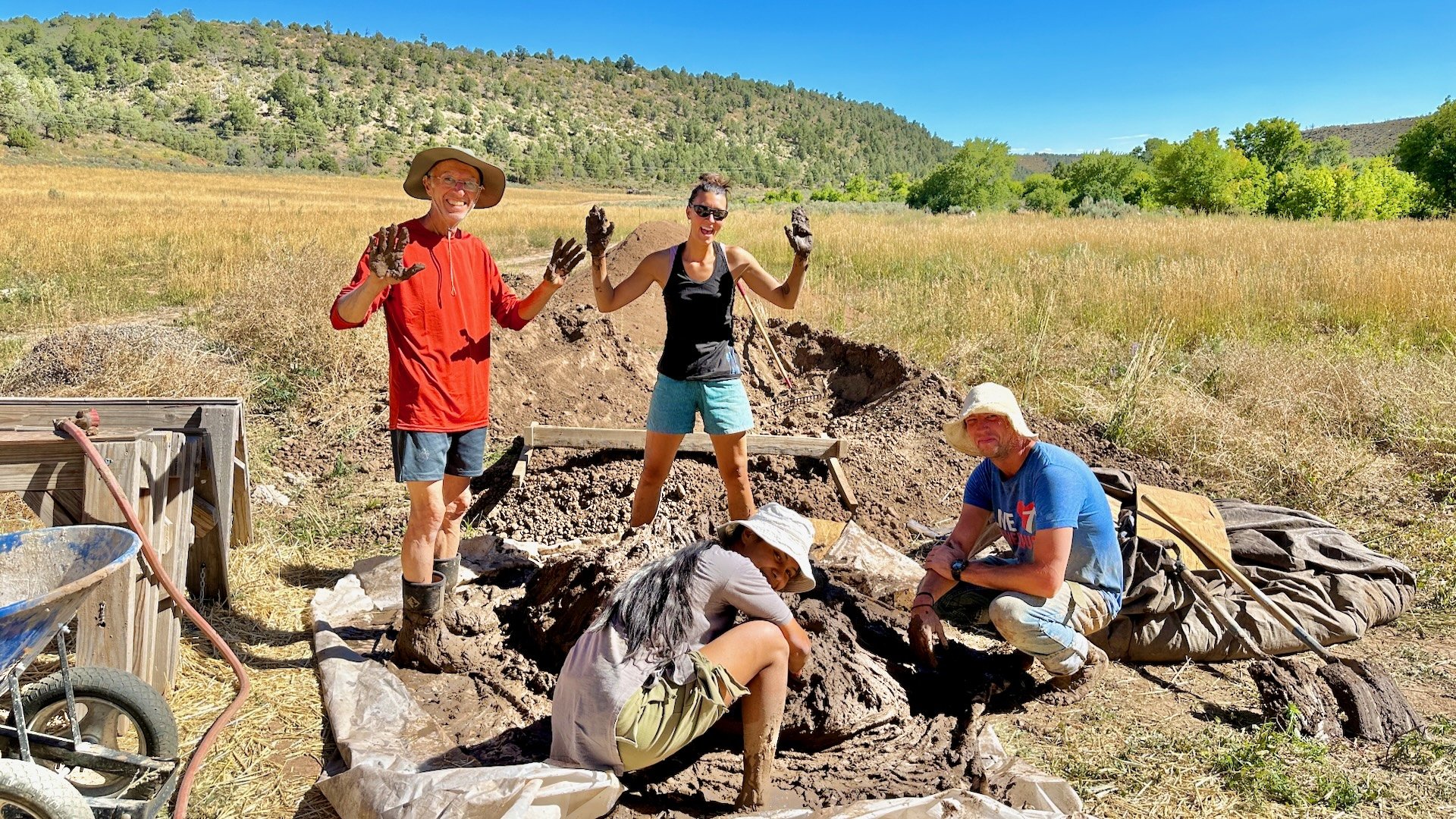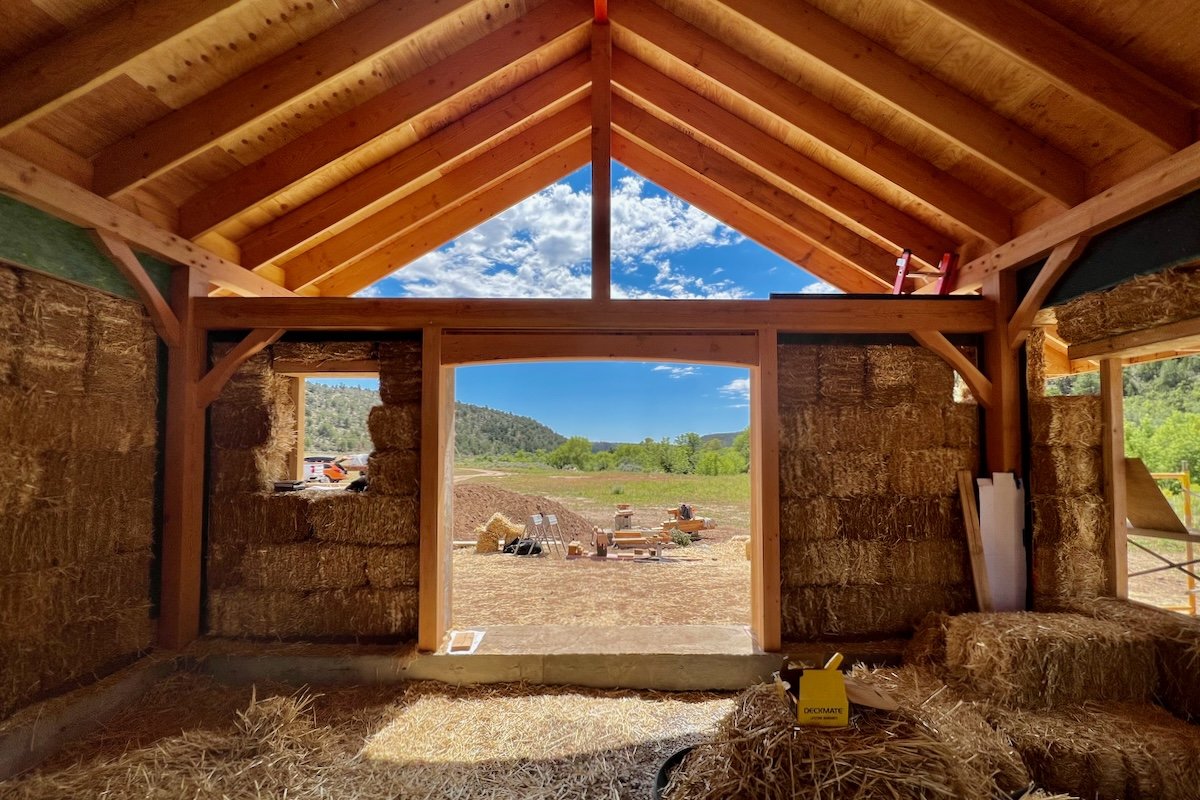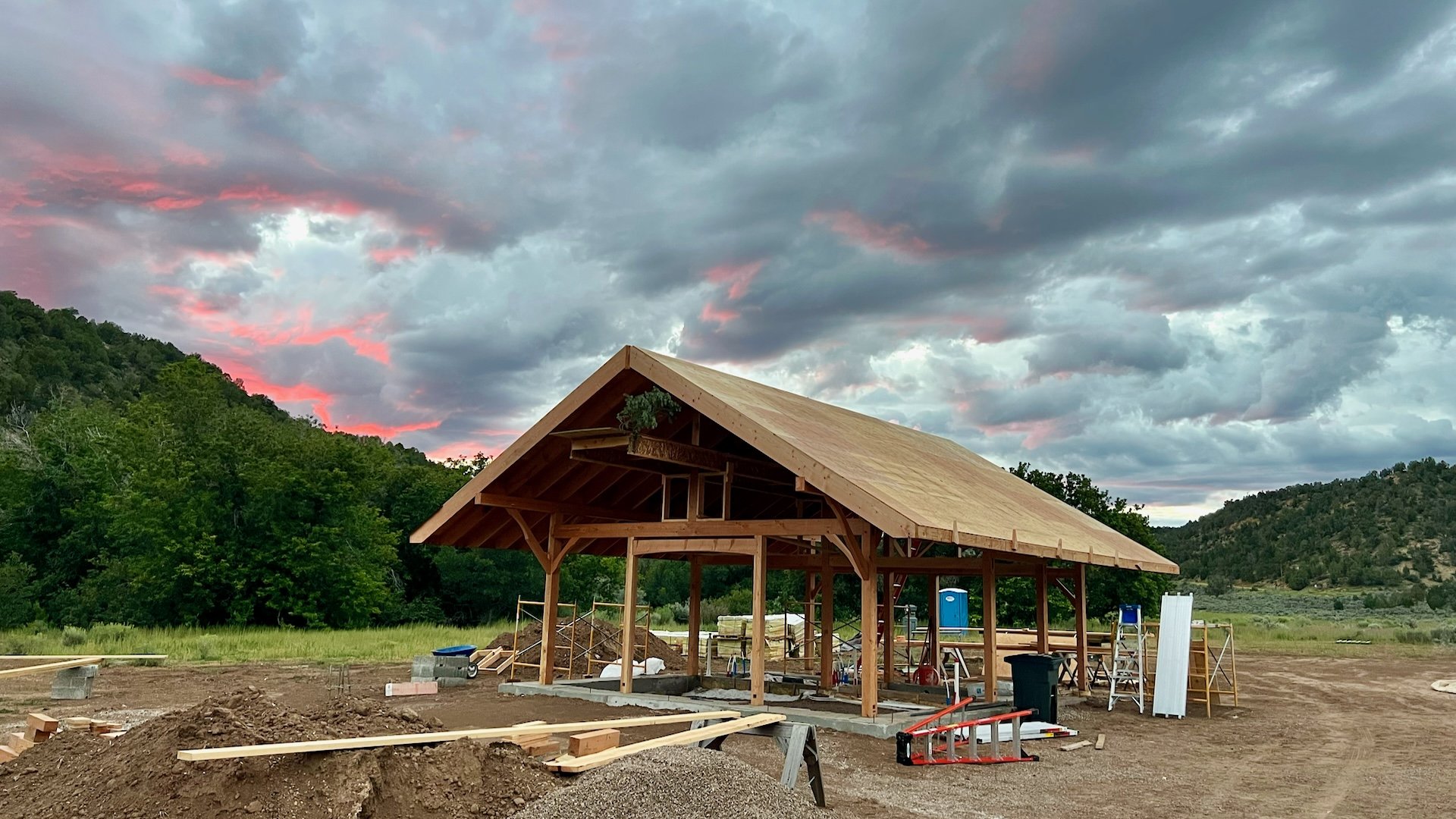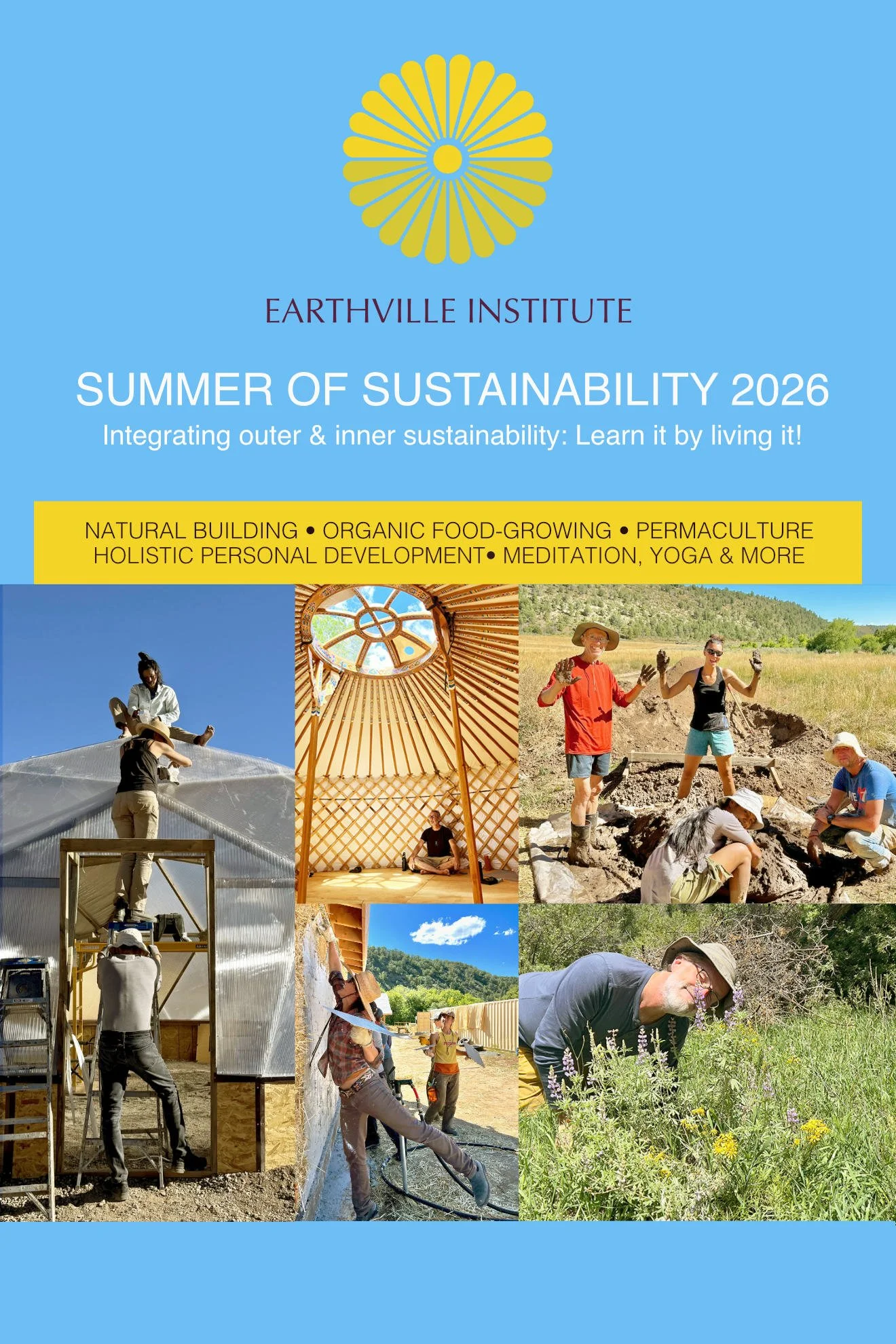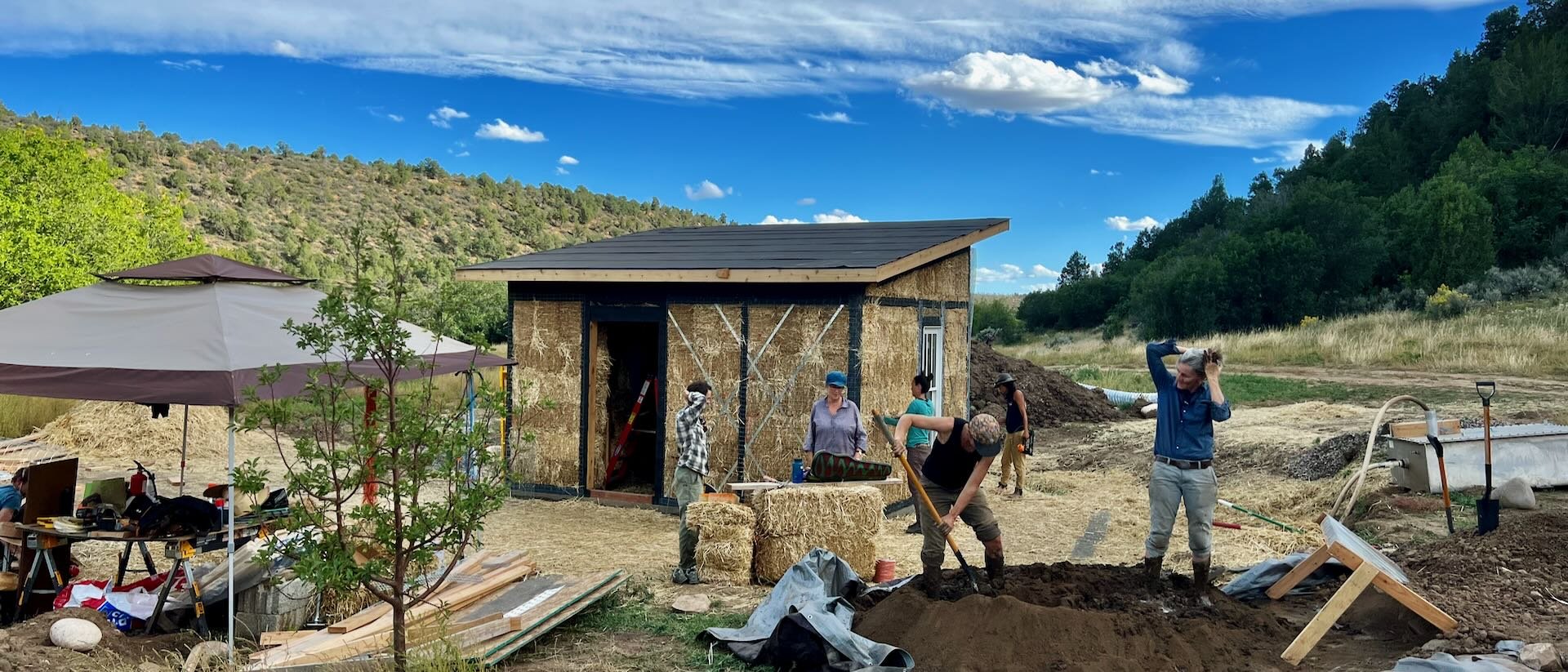
NATURAL BUILDING
WHAT IS NATURAL BUILDING AND WHY DOES IT MATTER?
Nature built humans to thrive by living in harmony with her. The arts and sciences of natural building are humanity’s endeavor to learn from nature’s example, to create human habitats that reflect nature’s brilliantly functional, supremely beautiful, and inherently sustainable design.
“The natural environment sustains the life of all beings universally.”
— The 14th Dalai Lama
“Natural building” vs “green building”
The term “green building” has become a buzzword with fuzzy meaning, often referring merely to incremental improvements (e.g. more efficient energy use or thermal regulation) in buildings that are otherwise not at all “green.” Picture a massive structure of concrete, glass, and steel with efficient air conditioning, LED bulbs, and vines on the face of the parking garage. Such structures can be marginally less harmful to our planet than much of conventional building practice (which tends to prioritize only cost and speed), but they’re nowhere near the best we can do — and not nearly enough to meet the challenge of the climate crisis we face.
By contrast, we use the term “natural building” to refer to time-tested shelter systems that begin and end with nature. Much more than a technique or a building material, natural building is the union of materials and methods with sensitive observation and philosophical reflection. It starts with sensitivity in site selection and scope (building in sensible places, and not overbuilding). It makes maximum use of locally sourced natural materials such as earth, stone, plant-based and reclaimed materials, etc. And, at its best, natural building also means learning from nature so that we can build the way nature herself builds, such that the entire life cycle of a building — from idea to material sourcing to construction to its inevitable decomposition — is in harmony with nature.
Key benefits of natural building
Why all the current excitement about natural building? Several decades of experimentation with modern materials and techniques — and witnessing their drawbacks and environmental impacts — has shown that there are many respects in which natural building materials and methods are demonstrably superior to conventional materials and methods for most common use cases.
Less disruptive to the earth and its ecosystems and wildlife
Healthier to live in (thanks to breathability, reduced chemical exposure, etc.)
Lower embodied energy (less nonrenewable energy used in construction)
Sourcing building materials on-site or nearby reduces carbon cost as well as transportation expenses
Often superior thermal properties (which in turn requires less energy for cooling/heating)
Beautiful features and finishes achieved without use of toxic or environmentally harmful materials
Sustainable throughout life cycle (as natural buildings, when they reach their end, return to the earth as compost)

"Whatever good things we build end up building us."
— Jim Rohn
LEARNING NATURAL BUILDING WITH EARTHVILLE
Hands-on learning with a holistic, contemplative approach
Several distinct features come together to make Earthville Institute an ideal place to learn about natural building:
Immersion in nature
The best way to learn about nature is to live with her intimately. Our residential programs provide perfect opportunities for the kind of deep, long-term immersion in nature that gives birth to profound understanding.
Examples and case studies
Our eco-campus is a showcase for many possible solutions for natural building, and you’ll be living in them, using them daily, gaining experience and insight one can’t find in books or online.
Experiential, hands-on approach
Learn it by doing it, working alongside experienced artisans who want to help you learn and can guide you in your development of skill and understanding.
Holistic orientation and systems thinking
Our natural building programs take a systems view, examining the whole person engaging with whole solutions, shining as much light on the builder as we do on the building.
Supportive environment
We are here to help catalyze your growth as a sensitive and skillful natural builder, and as an effective agent of fruitful action in our world.
Our natural building programs
Earthville Institute offers workshops and trainings in various aspects of natural building, including adobe and stone masonry, cob, straw-bale building, carpentry, and more.
People with the most passionate interest may also want to check out our annual three-month “Summer of Sustainability” program.
For details, see our Upcoming Programs and Events page.
Those of you who might be looking for an adventures way to learn natural building might also want to consider joining one of the programs at our sister school in the Himalayas, Dharmalaya Institute for Compassionate Living, which offers periodic workshops in various aspects of natural building as well as an Internship in Vernacular Eco-Architecture.
LEARN: COMPASSIONATE LIVING | NATURAL BUILDING | ORGANIC FOOD GROWING | MEDITATION & YOGA | PERSONAL & VOCATIONAL DEVELOPMENT

